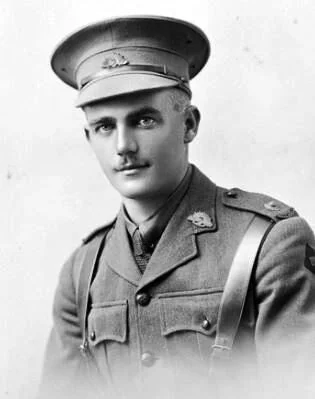By Stirling Taylor
We’re teeing off at Eastlakes Golf Course on a 400m par 4.
I hit driver, Dugald hits a casual 5 iron that carries just as far. He taps in on the 18th for par and finishes with a round of about 80. Bowls fast, hits hard.
He’s no slouch on the cricket field either, having recently been awarded a Sydney University Cricket Blue.
Dugald Holloway, a first grade quick and consistent performer for the Blue and Golds for the past seven years, has recently been recognised for his outstanding achievements on the pitch.
Throughout the 2020 season Holloway played all 29 games, taking 46 scalps and scoring 350 runs.
It’s an achievement that follows the accolades of many other notable awards. Holloway was selected in the 2019/20 NSW first grade team of the year and has been the main enforcer for the Uni side in previous years.
“I grew up and played my first cricket in England; Surrey Under 10s,” Dugald says. “I remember bowling three beamers in that game, I was taken out of the attack. I’ve always been a bit wild.”
Over the years, Dugald has been invaluable for Uni. Aggressive with ball in hand and at times, a force with the stick.
“I was tall and had some natural pace,” he said.
He’s very tall and an imposing figure. Not quite Billy Stanlake-esque, but nonetheless not a nice sight steaming in from the top of his mark.
Holloway says he loved watching the likes of Brett Lee and Glenn McGrath growing up.
When asked about his recent accolade, a Sydney University Blue, humble Holloway said it was special to be on a list alongside many club greats and Sheffield Shield players, like teammate Nick Larkin.
“I’ve given myself a good chance (of receiving it), being here for seven years,” he laughs.
Holloway is currently completing a Masters of Commerce, a path not easy to succeed in when juggling an internship and first grade cricket.
“It’s a special accolade,” Dugald said. “My grandad always used to ask about it. It’s obviously a traditional thing, beginning from Oxford and Cambridge.”
Finishing up his seventh year at the club, Holloway isn’t short of memories on and off the pitch.
“Winning the one-day cup last year was pretty good,” he said. “All of the Sams [brothers] were playing. I’m pretty sure you watched that game.”
I did. His first over was a doozy. Two wides, lucky not to be deemed no balls.
“That’s ridiculous, they weren’t given wides. Well anyway, I took four fa,” he says defensively. “I would liken myself to a rubbish county bowler. All of the Australian guys are too good. Who was it ...”
“Pavel Florin?” I say jokingly. (A Romanian all-rounder who bowls right arm lollipops).
Regardless of the player comparison, Holloway has always made a name for himself and been on the radar for representative cricket.
He has a high score of 104 and taken figures of 5/30, along with many other five and four wicket hauls. At 16, he was part of a winning NSW under 17’s side in Tasmania at the National Championships.
Holloway then made an appearance on the short-lived ‘Top Gun’ Wide World of Sports segment, infamously stumbling on a hard wicket when trying to pelt down a rocket.
Even with the stumble, he clocked 122 km/h, to Mark Nicholas’ disappointment. Eight years later, 264 career games, 328 wickets and 2772 runs to the tally, Holloway has only improved, taking wickets and making valuable runs in his no.8 spot.
While succeeding on his own merit, Holloway thanks the great people and club at Sydney Uni, who he relishes playing for.
“Clubs are all about the people,” he said. “We have a great winning culture and drive to win, along with like-minded individuals who care about our community and facilities. That’s what differentiates Uni from everyone else.”
Shortly after the 10th hole, a par 5, I found out why he doesn’t take driver off the tee. He can’t hit the fairway.
Nonetheless, he's a youngster who certainly has a lot going for him.






